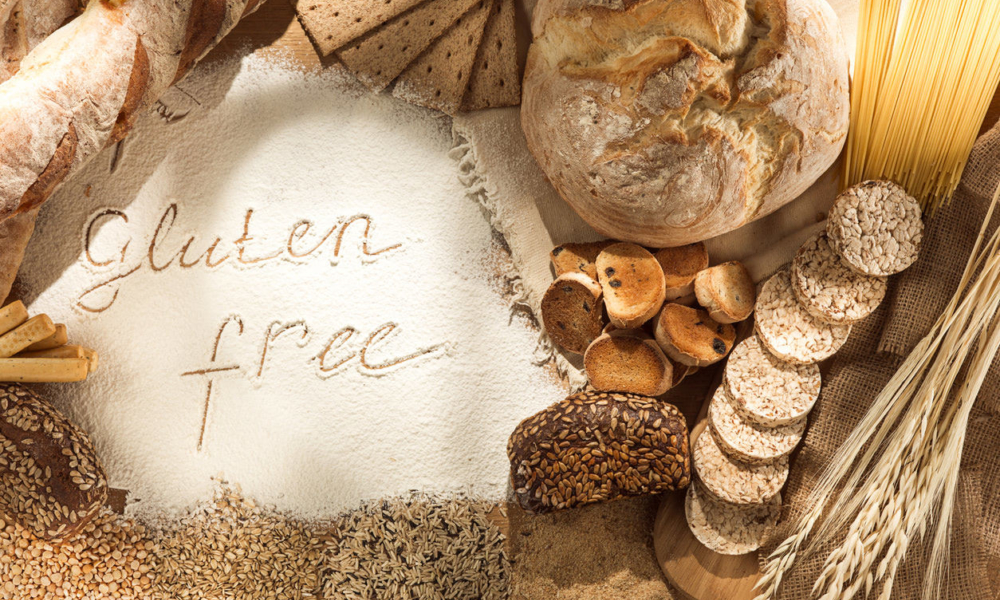
Living Gluten Free
There are many reasons that someone would want to adopt a gluten-free diet. One of the most common reasons is celiac disease, an autoimmune disorder where it could be harmful to someone’s health if they consumed gluten. However, there are other reasons as well. Some people are just gluten intolerant or sensitive, meaning that they don’t feel well after consuming it. Others go gluten-free because they believe that it may help with autism, anxiety, depression, or other health ailments. So—there are many reasons. But, what exactly IS gluten, and what constitutes a gluten-free diet? What should you eat, and what should you avoid? Read on to learn more about this protein and how to avoid it.
What Is Gluten?
The simple version is, gluten is a protein that is found in many grains. The three that people are most familiar with are wheat, barley, and rye, which are used as ingredients in quite a few foods. Gluten has beneficial properties during the baking process, as it can hold the dough together or help with leavening in foods such as bread and pasta. While it is naturally found in grains, it is often artificially added to foods because of the unique properties it has—so for those who must avoid gluten, this can often be a harrowing situation.
Before You Try a Gluten-Free Diet
A gluten-free diet avoids gluten completely. If you’re just trying to avoid gluten, there will be a list of foods below to try to enjoy or avoid. However, if you suspect that gluten may be affecting your health, this is something you should speak with your healthcare provider about. Symptoms that indicate that you may have celiac disease include:
- Fatigue
- Skin disorders
- Anemia
- Joint pain or stiffness
- Infertility
- Miscarriage
- Irregular periods
The symptoms of celiac disease in children will present slightly differently. You may see things such as weight loss, delayed puberty, bloating, abdominal pain, foul-smelling stools, or diarrhea and constipation.
If you or your child are experiencing any of these symptoms, it’s wise to go to your doctor to get tested. While an elimination diet may be helpful, it’s best to get a definitive diagnosis so you know for sure. Your doctor may perform tests such as:
- Liver function tests
- Alkaline phosphatase level test
- Complete blood count (CBC)
A skin biopsy may also help determine if a person has celiac disease. If these tests are inconclusive, an upper endoscopy can be performed.
However, you may also be gluten-intolerant or have non-celiac gluten sensitivity, which is a milder form of gluten intolerance. These two problems carry many of the same symptoms of celiac disease but do not pose a serious health risk. Generally speaking, you will just be uncomfortable after consuming gluten. Some of these symptoms include:
- Diarrhea and constipation
- Unexplained weight loss
- Fatigue
- Skin problems
- Anxiety and depression
- Bloating
- Joint and muscle pain
Because many of these symptoms are unpleasant, it would be wise to try a gluten-free diet. So what does that entail?
What Is a Gluten-Free Diet?
A gluten-free diet is entirely free of gluten. This sounds simple enough. You may think, I’ll just avoid bread and pasta. Unfortunately, it’s not that simple. If you remember, food manufacturers use gluten in many foods because of its binding properties and other benefits.
So, gluten is hiding out in a lot of places. One of the most controversial discussions is oats. It is imperative (particularly if you have celiac disease) that you do not buy oats unless it specifically says gluten-free on the label. Many oats are processed with gluten, however, it doesn’t specifically say that on the label. There are a few other common foods where this is true. Five foods you should avoid include:
- Processed lunch meats and hot dogs
- Salad dressings
- Sauces (even soy sauce)
- All types of candy
- Beer
These foods may sound surprising, but most likely, they will contain gluten unless it specifically says so on the label that the product is gluten-free. Besides wheat, barley, and rye, there is a list of grains that you should avoid when reading labels (because reading labels is exceedingly essential). Make sure you stay away from:
- Farina
- Bulgur
- Spelt
- Graham flour
- Semolina
All of these grains contain gluten, just as wheat, barley, and rye do.
What Foods Can I Eat on a Gluten-Free Diet?
There are many foods that you can eat on a gluten-free diet. Many restaurants now offer gluten-free options, and grocery store aisles offer healthier sections, with offerings such as gluten-free bread and even gluten-free Oreos!
You can even make recipes at home that are gluten-free. They make gluten-free flours so you can still enjoy your favorite baked goods at home, such as gluten-free cake or gluten-free banana bread. In fact, many flours are gluten-free, including almond flour, amaranth flour, buckwheat flour, cornflour, and rice flour.
When it comes to regular cooking, a good rule of thumb is to eat clean. Buy fresh meat and poultry, and cook it yourself, so you know that there are no additives. Baking or cooking items in olive oil or light butter are your best bet. If you want to cook in store-bought sauces, you must read labels extremely carefully. The best thing to do is look for items that specifically say certified gluten-free on the label to make sure that it’s a safe product to use.
Talk to a Gastroenterologist in Needham, MA Today
If you need more information about celiac disease or gluten intolerance, or if you would like to understand the gluten-free diet better, contact us today. We can help diagnose if you do have celiac disease and intolerance and help work on a diet plan that still makes food enjoyable and satisfying. Schedule an appointment today.